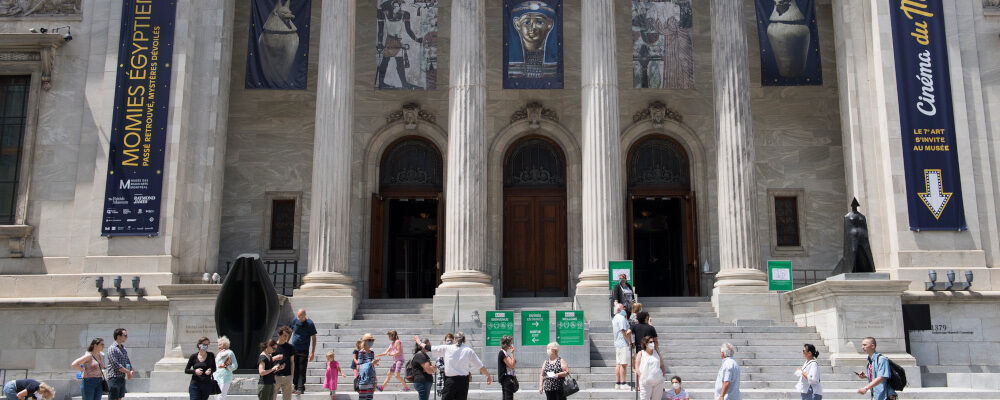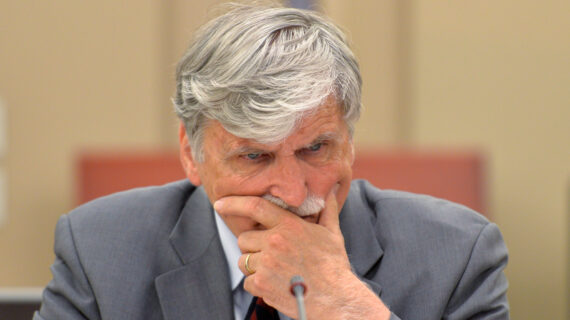Review of: In Defense of Civilization: How Our Past Can Renew Our Present
Author: Michael R.J. Bonner
Publisher: Sutherland House Books 2023
Do we live in a civilisation? It is a question that occurred from the opening page of Michael Bonner’s recently published In Defense of Civilization1Despite being published in Canada, the book uses the American spellings of both “Defense” and “Civilization.” There is a separate essay to be written about the significance of that choice, which I will leave unwritten. and lingered with me after I finally closed the book. If you’d asked me the question a month ago, I would have reflexively said yes, of course we live in a civilisation, albeit one that is in terminal decline. Now I am not so sure.
After reading Bonner’s rousing new book alongside Eleanor Parker’s Winters in the World, which traces the cycle of the Anglo-Saxon calendar as reflected in the writing, and especially the poetry, of the age, my answer would be an uncertain no. I would say that civilisation ebbs and flows but never wholly retreats, which is why we don’t feel that we live outside civilisation. Like the Anglo-Saxons, we live amid the wreckage of a culture greater than our own, one whose language we still understand and whose achievements still lift us up, but with a disquieting sense of what has been lost.
Fittingly, Bonner opens with an epigraph from The Ruin, the strange and haunting poem by an unknown eighth or ninth-century Anglo-Saxon poet meditating on the Roman ruins of Bath. It is a fragmentary relic from the very heart of the Dark Ages, a time that has long been considered the opposite of civilisation. And yet the poem, and other writings that survive from that time like the sermons and commentaries of Ælfric (who deserves a place in English religious letters next to Andrewes, Donne, and Newman), is as subtle and sensitive as anything written in our lifetimes. Which prompts the question: if the nadir of Western history was, in fact, capable of such sublime art, what does that say about us?
The strikingly contemporary feel of Anglo-Saxon poetry shouldn’t be a surprise. We’ve long known that the early Middle Ages were not nearly as dark as the old myths about that time from the Renaissance and the Enlightenment. Even after the Romans left, England never forgot the memory of the civilisation of which had been an outpost and it was never wholly cut off from the civilisation that endured elsewhere. Neither the people nor the culture of the Dark Ages were as static as we might imagine them from our modern global perspective, and Ælfric and his contemporaries were part of a scholarly network that extended well beyond the borders of modern Europe.

St Theodore, who was appointed Archbishop of Canterbury in 668, was a formidable scholar from Tarsus, which is now part of Turkey but was then a Greek-speaking city of the Byzantine Empire,2Best remembered today as the birthplace of Saul of Tarsus, the future St Paul. and St Hadrian, who was appointed abbot of the great monastery at Canterbury around the same time, was originally from North Africa, probably Cyrenaica in modern Libya, an area that had produced three early popes and two of the most important minds of the early church, Tertullian and St Augustine.3Eleanor Parker, Winters in the World (Reaktion Books 2022) 21-22. Together, Theodore and Hadrian and a regular exchange of scholars brought the teaching of Rome, Antioch, Constantinople, Libya, and Syria to England, where it was interwoven with the indigenous history of the island and an established tradition of Scandinavian literary and cultural influence.4There was, of course, already a venerable church in Britain and Ireland by the end of the 6th Century when St Augustine arrived on a mission from Pope Gregory the Great to convert the English. Christianity arrived with the Romans in the first century AD, and there is some reason to believe that St Aristobulus of Britannia was one of the emissaries of Christ mentioned in Luke’s Gospel and was already in England by the time St Peter arrived in Rome.
Bonner’s account of civilisation recognizes this sort of cultural exchange as the way by which civilisation spreads. A constant flow of exchange, imitation, and appropriation—an idea now loudly disdained in principle even while it is still quietly followed in practice—means that when civilisation wanes in one place, knowledge of the past is preserved somewhere to serve as a future source of inspiration and recovery.
The first episode of Kenneth Clark’s monumental series Civilisation made this point vividly, whisking the viewer back to the small communities of monks copying manuscripts in beehive cells off the coasts of Ireland and Scotland in the early middle ages. Western civilisation survived the collapse of the Western Roman Empire, Clark says, “by clinging to places like Skellig Michael, a pinnacle of rock seven miles from the Irish coast, rising seven hundred feet out of the sea.” It’s a romantic image, with some truth to it, but it is far from the whole story. The survival of Western civilisation owes as much to Byzantine scholars in Canterbury (to say nothing of Byzantine scholars in Byzantium) as to eremitic scribes on Skellig Michael.
The great strength of In Defense of Civilization, and the reason that only someone with Bonner’s unusual range could have written it, is a global and historical scope that allows it to tell this more complete story. Bonner, as the blurb from Nassim Taleb on the dustjacket notes, is a rare scholar who is comfortable not just in Greek and Latin but in Persian, Arabic, Aramaic, and Hebrew. This gives the book a rare depth when he discusses civilisations beyond Europe and classical civilisations beyond Greece and Rome. Even Clark, as erudite a man as ever appeared on camera, confined what he called his “personal view” of civilisation to post-Roman Europe, while Bonner’s account goes back to the origins of civilisation in near-eastern pre-history and returns repeatedly to the history of Iran and China.
Bonner’s comfort with original sources from the ancient Near and Middle East makes his discussions of the Persian and Arab civilisations, and their influences on the birth and rebirth of European and East Asian civilisations, the highlight of the book. I would happily read another volume devoted entirely to this world and on characters like the Sumerian king Shulgi of Ur and the later Sasanian king Khusro I, of whom we necessarily get only tantalizing pen sketches as the story leaps through the centuries. By contrast, his account of modern history is fluent but relies more on secondary sources, of which there are so many in that over-tilled field.
Despite its title, the book is not so much a defence of civilisation as an attempt to explain the idea and a history of its repeated rise and fall. Bonner’s general thesis is that civilisation began when man came to see himself as having a particular place in the world that is contingent on a past that is still relevant to him and for his future. Bonner follows recent scholarship in first identifying this “civilized attitude … in the material culture of the Neolithic period, about 12,000 years ago,” before the agricultural revolution. We can, he says, see the earliest signs of the civilisational mindset in Neolithic ancestor worship and the use of sacred sites over multiple generations, customs that are still at the centre of the first advanced civilisations 7,000 years later, as we can see from the pyramids at Giza.
From the beginning, civilisation is inextricably connected with religious worship—a good reminder that the “cult” at the heart of “culture” has always been a shared religion. It should not be surprising that when man first took note of the order of heavens above him and the patterns of the seasons around him, he would want to understand his own place in that order. And so man entered time, for the order we are part of is bound up with both cyclical and linear time. Every man, like every living thing, lives a life from beginning to end, but the tribe, like the seasons, lives a cyclical pattern of birth and death over many generations.
With this realization, man’s horizon was no longer limited by what the next uncertain day would bring and his concerns expanded beyond his living kin group. This new way of thinking, Bonner writes, was marked by a “belief in the importance of a shared past” that “also suggests a particular view of the future” in which the living “can look forward to veneration as ancestors after death.” Our understanding of life suddenly stretched far into the past and into the future, introducing a sense of cultural permanence to what before must have seemed like a capricious and precarious struggle for existence.
From this epiphany, civilisation was born, and its flourishing was marked by the three principal features that Bonner identifies with a civilized way of life: clarity, beauty, and order. He devotes a chapter to each of these themes and to show how, when civilisations abandon them, they succumb to stagnation and corruption. Or perhaps it is when they succumb to stagnation and corruption that they abandon these principles. It isn’t entirely clear which way Bonner thinks the causal relationship runs—and I don’t think it has ever been clear to chroniclers of decline—but there seems to be something inherent in civilisation that leads eventually to decay, just as the inevitability of death lies deep in our cellular structure.
The enemy of civilisation in Bonner’s account is an ideological commitment to progress. Following arguments laid out by Robert Nisbet, James Burnham, Ryszard Legutko, and Augusto Del Noce, Bonner traces this ideology of progress to a turn in the scientific method at the beginning of the Renaissance, when men like Francis Bacon were no longer content to try to understand the natural world according to its internal laws and started to believe that we could master it and subordinate it to human ingenuity. We began to think of the natural world not as something to be stewarded but as something to be exploited, and we fell out of harmony with creation. We ceased to be guided by natural law or the Dao and put our faith instead in pure reason.
Bonner finds the apotheosis of this hubris in Marinetti’s Futurist Manifesto, which is mostly forgotten today but vividly sums up the 20th Century’s reckless, rocket-fuelled launch into the unknown. It is a testament to man’s inability to learn from his mistakes that even after two industrial-scale world wars and seventy-five years living under a nuclear shadow our obsession with novelty is undiminished, even as our playthings have become more deadly. No longer content to tinker with turbo-props and Tesla coils, today we rush blindly into a world of unregulated deep fakes, AI, and gene therapy.
All this came to mind reading Bonner’s summary of the liberal mindset:
Nineteenth-century liberals saw the breakdown of institutions as a work of progressive liberation, and their successors share this view. But those who cherished stability, rootedness, coherent moral beliefs, continuity of culture and religion, and human interdependence saw it differently. They saw only disruption, confusion, a sense of purposelessness, loneliness, and a frustrated need for belonging.
We should never forget that the unofficial motto of Silicon Valley is “Move fast and break things”—the exact opposite of the lessons that a good parent teaches a child. Nor should we be surprised that this culture of toddlers has produced a toddler’s vision of culture, one that is naively destructive and indifferent to the chaos it inflicts on the world around it. It is, as Bonner writes of the liberal project, a world of “disaggregation and atomization, which following the creed of “Francis Bacon, the Futurists and tyrants of all sorts … promises a break with the past by freeing the individual from all ancestral and institutional ties.” Its ultimate goal is to liberate us from reality into a world of our own creation, a derivative reality that is, in the end, an anti-reality.

If liberalism is the problem, then it follows that the solution involves a repudiation of liberalism, or at least its more corrosive beliefs, and an insistence on seeing reality clearly (Bonner’s criterion of “clarity”) and ordering our lives to it. This, as Bonner says, must begin with rejecting a commitment to radical autonomy divorced from concern for the common good. We must relearn that “[a]utonomy, rightly understood, is better exercised by groups and communities with a common wisdom and shared capacity greater than those of any single person.” Only then can we replace the unreal and unrealistic nightmare of society in which the basic building block is “the solitary individual” with the older natural community of interconnected intergenerational families.
In his first Christmas address to the Curia, Pope Benedict XVI urged us to reconnect our way of living with the natural law. We must accept:
the invitation not to see the world that surrounds us solely as raw material with which we can do something, but to try to discover in it ‘the Creator’s handwriting,’ the creative reason and the love from which the world was born and of which the universe speaks to us, if we pay attention, if our inner senses awaken and acquire perception of the deepest dimensions of reality.
Bonner’s prescription for recovery is consistent with this advice. The heights of civilisation have found clarity of thought and built beautifully by ordering society in harmony with the patterns and cycles of creation. Through the imitation of these past examples—whether it is the order of Vitruvian and Palladian architecture or Confucian and Thomist wisdom—we may rediscover the principles of clarity, beauty, and order and apply them in a contemporary context.
I think this is right, but I would caution that the past is not just a foreign country, but terra incognita that we know only darkly from imperfect sources. Civilisation may have always “spread and developed through the imitation of past examples” but so has the worst barbarism of the modern age. The past can be abused as well as used. D’Annunzio’s proto-fascism mixed hedonic futurism with an atavistic nationalism that appealed to the distant grandeur that was Rome as well the recent memory of blood-earned and treaty-lost Italian territory. And the Nazis were famously obsessed with inventing a past for Germans to reclaim based on pseudo-scientific mythology and archaeological fraud. Civilisation, then, is not just about looking to the past but having the right orientation to the past, which is one that looks back to the past and forward to the future not with ancient or modern eyes, but from the timeless perspective of eternal truth.
At the beginning of the final chapter, Bonner reassures us that “[t]he picture emerging from the last three chapters is not wholly bleak.” Determined to leave the reader with some hope, he finds cause for optimism in an unexpected place: China, and specifically the recent revival of Confucian thought. The Chinese Communist Party’s belated recognition that man cannot live by ideology alone is an important concession, but I can’t share Bonner’s view about the regime’s treatment of religion generally. He notes, for example, that the state still “approves the curriculum in seminaries, making sure that the political slogans of the day are included” and “determines who may be ordained” but concludes that this “is a substantial improvement on banning religion altogether.” I disagree. A Christian may gladly be a martyr, but he must never be a collaborator. No good can come from such an unholy alliance.
The past is not just a foreign country, but terra incognita that we know only darkly from imperfect sources.
The past is not just a foreign country, but terra incognita that we know only darkly from imperfect sources.
I am also unconvinced by the book’s call for a revival of “clubs, societies, [and] volunteer groups.” This social infrastructure requires rooted lives, so until we stop moving around as easily as we do today, the foundations of civil society can only be built on sand. When Bonner says that he is “thinking of the post-industrial parts of Britain and Canada, or the American rust belt” and asks, “[w]hat would the renewal of institutions look like in such places where it is most needed?” he is asking the right question, but of the wrong places. Those “left-behind” places are the last places where benevolent societies, churches, and local bars and diners with lifelong regulars still exist. It is in our political and financial capitals, where we build seventy-storey apartment towers to warehouse men who don’t know their neighbours, that civil society has collapsed.
The more I think about it, the clearer the answer to my original question becomes. Like the poet of The Ruin, we live in the valley between civilisations, in the shadow of a peak still visible behind us but unable yet to see the peak in front of us. This should not be cause for despair. Although the history of man has been the story of the rise and fall of civilisations, the most important thing is that civilisation has never yet died out altogether; it has always been preserved somewhere. There is something vital in human nature, a civilisational élan, that ensures that every decline is followed eventually by a rebirth, as sure as a fallen tree will nurture new saplings. Civilisations come and go, but civilisation persists, forever being reborn somewhere.
It may also be that civilisation needs valleys as well as peaks, as we need sleep between our waking days, and that the retrospective orientation that characterizes each civilisation is even more important between them. If this is so, then the fact that the ruins are too weathered to restore does not let us off the hook— if anything, it makes our task more urgent. It falls to us in this Dark Age to wonder what went wrong, learn the lessons of the last collapse, and preserve that knowledge for a time when it will be useful.5Visiting Da Vinci’s Last Supper in Milan last week, I saw photographs of the sandbags piled high on both sides of the wall to preserve it against Allied bombing in 1943. Quite apart from the outrage of that bombing (I hope I would have deserted rather than participate in the mass desecration of that campaign), it is a powerful and useful metaphor for our time. We must do our small part to keep the memory of civilisation alive, even if it will fall to another people to recover what we have lost. Renewal will come. Not for us, not in our lifetimes, but it will come.




